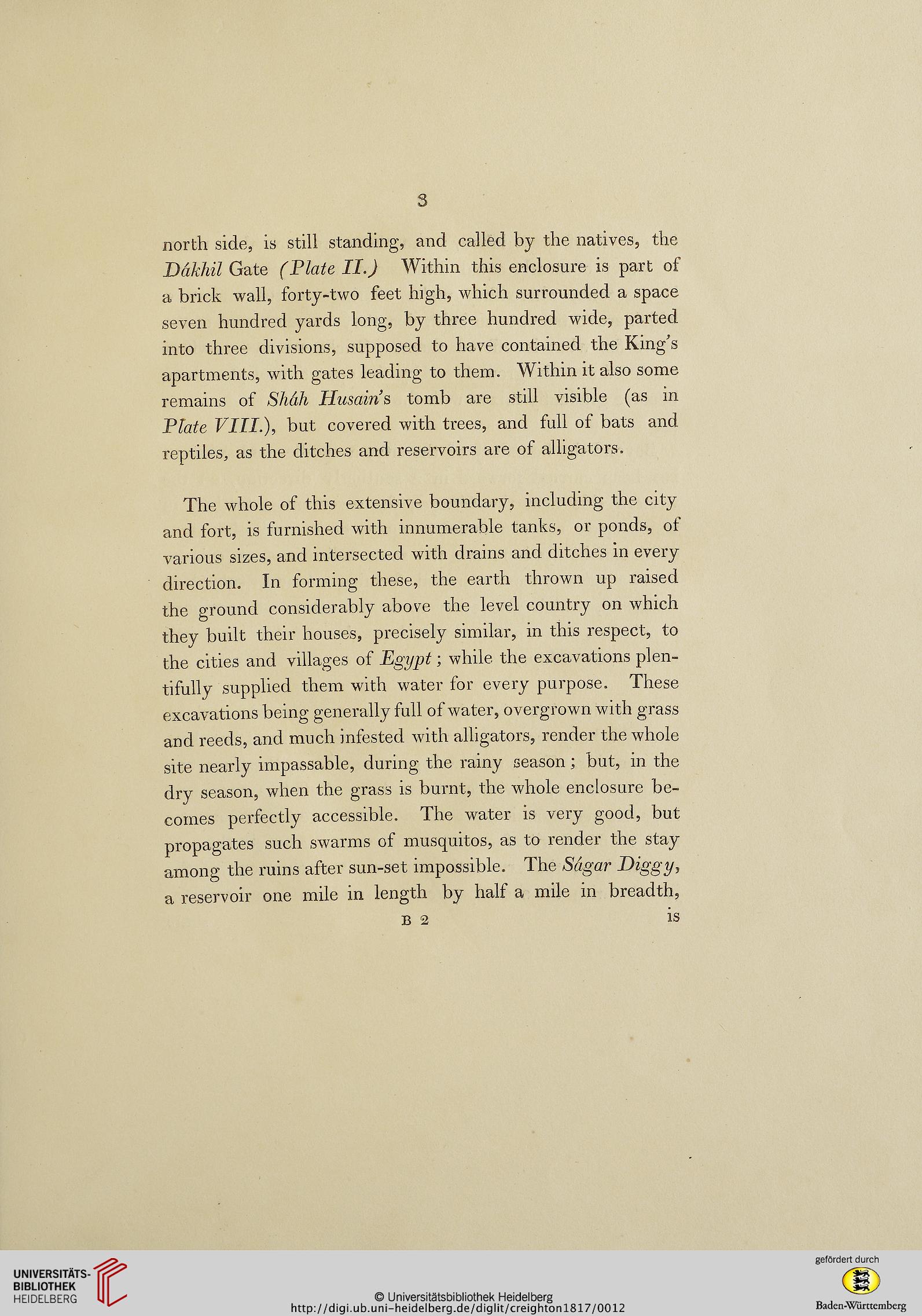3
north side, is still standing, and called by the natives, the
Pdkhil Gate (Plate II.) Within this enclosure is part of
a brick wall, forty-two feet high, which surrounded a space
seven hundred yards long, by three hundred wide, parted
into three divisions, supposed to have contained the King's
apartments, with gates leading to them. Within it also some
remains of Shah Husains tomb are still visible (as in
Plate VIII.), but covered with trees, and full of bats and
reptiles, as the ditches and reservoirs are of alligators.
The whole of this extensive boundary, including the city
and fort, is furnished with innumerable tanks, or ponds, of
various sizes, and intersected with drains and ditches in every
direction. In forming these, the earth thrown up raised
the ground considerably above the level country on which
they built their houses, precisely similar, in this respect, to
the cities and villages of Egypt; while the excavations plen-
tifully supplied them with water for every purpose. These
excavations being generally full of water, overgrown with grass
and reeds, and much infested with alligators, render the whole
site nearly impassable, during the rainy season; but, in the
dry season, when the grass is burnt, the whole enclosure be-
comes perfectly accessible. The water is very good, but
propagates such swarms of musquitos, as to render the stay
among the ruins after sun-set impossible. The Sugar Piggy,
a reservoir one mile in length by half a mile in breadth,
B 2
is
north side, is still standing, and called by the natives, the
Pdkhil Gate (Plate II.) Within this enclosure is part of
a brick wall, forty-two feet high, which surrounded a space
seven hundred yards long, by three hundred wide, parted
into three divisions, supposed to have contained the King's
apartments, with gates leading to them. Within it also some
remains of Shah Husains tomb are still visible (as in
Plate VIII.), but covered with trees, and full of bats and
reptiles, as the ditches and reservoirs are of alligators.
The whole of this extensive boundary, including the city
and fort, is furnished with innumerable tanks, or ponds, of
various sizes, and intersected with drains and ditches in every
direction. In forming these, the earth thrown up raised
the ground considerably above the level country on which
they built their houses, precisely similar, in this respect, to
the cities and villages of Egypt; while the excavations plen-
tifully supplied them with water for every purpose. These
excavations being generally full of water, overgrown with grass
and reeds, and much infested with alligators, render the whole
site nearly impassable, during the rainy season; but, in the
dry season, when the grass is burnt, the whole enclosure be-
comes perfectly accessible. The water is very good, but
propagates such swarms of musquitos, as to render the stay
among the ruins after sun-set impossible. The Sugar Piggy,
a reservoir one mile in length by half a mile in breadth,
B 2
is




